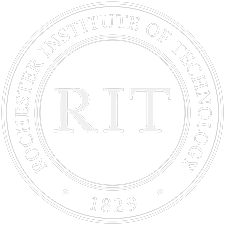
Extended radio emission from galaxy clusters takes many shapes. Radio jets and lobes are routinely observed from cluster galaxies, their radio structure often shaped by motions of the surrounding hot X-ray emitting gas. Diffuse emission from the intra-cluster medium itself takes the form of giant cluster-wide synchrotron halos, elongated relics, and mini-halos that fill the cluster cores. Their origin is an intriguing problem of the physics of the intra-cluster medium. Low-frequency radio observations play a crucial role in the study of cluster radio sources, which are often characterized by steep synchrotron spectra. Recent observations have provided new insights on these complex non-thermal sources, revealing surprising phenomena. In this talk, I will present a number of remarkable examples that may challenge our current physical picture of galaxy clusters and understanding of particle acceleration processes in the intra-cluster medium.

Density fluctuations within Earth’s ionosphere complicate radio-frequency astronomical observations, especially at low frequencies (<500 MHz). In particular, synthesis-imaging interferometers with baselines longer than a few km can lose coherence and be unable to image sources within this frequency regime. Conversely, these corrupted observations can serve as extremely precise probes of ionospheric structure on spatial scales from kilometers to ~100 km and on time scales on the order of seconds to hours. It is not surprising then that in the past few decades, several unique investigations of ionospheric disturbances have been undertaken using telescopes such as the Very Large Array (VLA), the Long Wavelength Array (LWA), the Low Frequency Array (LOFAR), the Murchison Widefield Array (MWA), and the Giant Metrewave Radio Telescope (GMRT).
While these pioneering efforts have quite successfully elucidated several unique aspects of ionospheric structure, they suffer from a common shortcoming: portability. Establishing a network of similar telescopes to enable global studies of ionospheric disturbances/irregularities is not economically feasible. Here, we describe efforts to develop a Deployable Low-band Ionosphere and Transient Experiment (DLITE) to address this. The DLITE system is an interferometer consisting of four LWA inverted vee dipole antennas spread out over baselines of 200—500 m. The backend uses commercial off-the-shelf parts, including software-defined radios with the real-time “correlator” at its heart written in GNURadio. DLITE operates in a nominal band of 30—40 MHz, using time difference of arrival (TDOA) methods and nonlinear fitting techniques to isolate bright cosmic sources on the sky.
By monitoring “A-Team” sources (Cygnus A, Cassiopeia A, Virgo A, Taurus A, Hercules A, Hydra A, and Centaurus A) with a relatively wide bandwidth, the array can detect intensity and phase fluctuations from irregularities with strength parameters as small as C K L≈10 27 . Additionally, by using DLITE to track the apparent motions of these sources, transverse gradients in the line-of-sight total electron content (TEC) can be measured with a precision ~10 -4 -10 -3 TECU km -1 . More details can be foud within the DLITE system paper (Helmboldt et al., Radio Sci., 56, e2021RS007298. https://doi.org/10.1029/2021RS007298).
We will discuss the current state of the network, which consists of three arrays in Maryland, New Mexico, and Florida; recent science results; and plans/opportunities for future deployments.

The MeerKAT radio telescope is situated in the arid Karoo region of central South Africa. The development and deployment of MeerKAT marked a dramatic increase in radio astronomy activity in the country and region. The history of MeerKAT is also tied to that of the SKA in South Africa. This talk will provide a historical overview of MeerKAT, including key decision points, important factors in the success of the telescope and lessons learnt.

The Pulsar Monitoring in Argentina (PuMA) collaboration between IAR and RIT has been observing southern pulsars with high cadence using the two restored IAR antennas in the L-Band (1400MHz).
A program to observe transient phenomena, such as magnetars and glitching pulsars as well as precise timing of millisecond pulsars has been carried out since 2017. Access to lower frequency bands, where most of the pulsars are brighter, allow us to reach additional pulsars currently buried in the interference noise. For instance, we display two dozen glitching pulsars that could be easily observable by MIA in the 400MHz band. We also discuss the challenges and importance of pulsar timing at low frequencies.

The transient sky is composed of diverse phenomena that exhibit drastic changes in short timescales. These events range from sub-second emission to weeks and month timescale variability. Several challenges need to be addressed by any facility that aims to observe such events: a fast re-positioning scheme to trace the first moments of events like Gamma-Ray Bursts (GRBs), a large field of view to be able to detect new Fast Radio Bursts (FRBs), or high sensitivity to detect the outflows and flaring activity in Galactic binaries. Combined with a large bandwidth in order to recover the spectral information from these sources, it would allow us to unveil the physical properties required in these systems.
The new Multipurpose Interferometer Array (MIA) in Argentina may represent a suitable facility to conduct deep and leading-edge studies on the transient sky as the ones aforementioned. In this talk I would summarize these topics and how astronomers may exploit the MIA for these purposes.
Additionally, I would discuss the interest from the community on the possibility of connecting the 30-m IAR antennas within a VLBI network such as the European VLBI Network (EVN), and place Argentina in the map to achieve very-high-resolution (on the milliarcsecond level) observations. This mode, together with the observations with the MIA would open a potential new regime that would allow astronomers to significantly increase our knowledge on the Southern Sky.

The SARAS (Shaped Antenna Measurement of the background Radio Spectrum) is an ongoing experiment aiming to detect the redshifted global 21-cm signal expected from Cosmic Dawn (CD) and the Epoch of Reionization (EoR). Observations of the 21 cm transition are challenged by the orders-of-magnitude brighter foreground from Galactic and extragalactic radio emission, ionospheric effects, radiofrequency interference (RFI) and the chromatic response of the radiometer. This talk traces the evolution of the SARAS design, the challenges faced, and the results of our observations. The talk will describe our approach to modelling the Galactic and extragalactic radio emission using maximally smooth functions. Its feedback on the antenna design and the evolution of antenna design from a fat dipole on an absorbing ground plane to the first of its kind, "A Floating Octave Bandwidth Cone-Disc Antenna", will be discussed. The talk will highlight system design emphasis on achromaticity, double differencing, optical isolation and cross-correlation digital spectrometer for improved accuracy in calibration and rejection of additive and multiplicative systematics. We follow a system design philosophy to nip the systematics before it even buds. I will share our adventures to look for interference-free sites on mountains 5000m high and sufficiently broad and deep lake waters to minimise systematics arising from ground reflections. I will describe the salient features of our data analysis scheme, which showed that the profile of Bowman et al. in data taken with EDGES low-band instrument is not of astrophysical origin. The conclusion will touch upon what is next in the SARAS collaboration.

The Murchison Widefield Array (MWA) is a low-frequency radio interferometric telescope based in the world’s quietest radio astronomy zone: the Murchison Radio-astronomy Observatory (MRO) in rural Western Australia. It is designated as one of the Precursors to the Square Kilometre Array (SKA) Low telescope and has been revolutionising our understanding of the low-frequency extragalactic radio sky. The phase I all-sky survey, GLEAM, and the follow-up Phase II survey, GLEAMX, are are the only wide area surveys to the cover the Southern sky at such low frequencies. From these a wealth of science has already been enabled from new kinds of transients, GHz peaked spectrum sources, diffuse cluster sources, and discoveries of synchrytron emission from the cosmic web. In this talk I will cover the details of the telescope and these transformative surveys and go over some of the science highlights thus far as well as looking to the future.


In this talk, I will present a personal review of the main scientific achievements carried out by researchers working at IAR, and show the global parameters of the production and the people involved.
Besides, in the frame of the current instrumental developments along Argentina, the scientific objectives of MIA will be briefly depicted.

For more than 25 years, IAR has been directing efforts from basic research and radio astronomy development to technology transfer projects around the National Space Plan and to SMEs. With the surge of COVID-19, our organization's transformation accelerated, bringing new opportunities and challenges which can be applied to impact health, education, processes, and businesses. In this talk, I will review our efforts to bridge the gap between basic science and the needs of our society.

The Argentine Institute of Radio Astronomy is developing a new radio astronomical observational instrument called Multipurpose Interferometer Array, MIA which initially consists of an arrangement of 16 antennas of 5 meters in diameter arranged in an area that can cover 50Km in order to obtain an angular resolution of at least 1.5 seconds of arc in Band L, that is, 1420 MHz. In order to advance in the design and planning of MIA, began the development of a prototype or Pathfinder that will be installed in the IAR, where 3 complete antennas will be tested and the Back End Digital and Correlator for the implementation of the functions of correlation between the different baselines thus obtaining the interferometry products. In this talk, the main aspects of the MIA instrument and advances in the development of the pathfinder will be explained.

I present an overview of the Instituto Argentino de Radioastronomía (IAR): its origins, milestones, present, and prospects.
Ultraluminous X-ray sources are point-like, extragalactic non-nuclear objects, where the luminosity in the X-ray band appears to be higher than the Eddington luminosity. These objects are thought to be X-ray binaries accreting at super-Eddington rates, in which the ∼ 1040 erg/s power in the X-ray band is emitted from the innermost part of the accretion disk around the compact object. The super-critical disk ejects a powerful radiatively-driven wind that collides with the stellar wind, where strong shocks are generated. In this work, we show that the collision of winds in these systems leads to nonthermal emissions. The ULXs usually yield a broadband spectrum, with radio luminosities of the order of ≈ 1034 erg/s produced by the electron synchrotron radiation.
The first task to solve in designing a radio interferometer is the location of the antennas, a problem that defines the interferometer response, whose solution determines which points of the (u,v) plane will be sampled, together with their density. These two parameters are extremely important because the antenna’s location, in turn, defines the synthesized beam or point spread function of the whole instrument, and an inadequate array configuration implies an ill-constructed synthesized beam. Consequences, in this case, are for example the need to delete measures over a range of spatial frequencies due to low signal-to-noise ratio, or, at the data reduction stage, to degrade spatial resolution in order to get a cleaner image. In order to have a better understanding of the parameter involved in the interferometer response, in this presentation we will introduce an in-progress simulator that provides the (u,v) distribution and the corresponding synthesized beam, like other common software developed years before, but that it is also able to run various optimization tasks, like Langrangian multipliers or custom tasks more related with the particular characteristics of this problem.
Solving ill-posed inverse problems has applications in imaging systems found in various areas of science and technology, from medical diagnosis to astronomical studies. The reconstruction of images from limited and noisy measurements requires the development of algorithms that can incorporate the physical mechanisms by which these measurements are produced, together with the properties of the images under study. In this talk, the sparse representation of images is introduced, which is a realistic, compact and effective generative model for natural images allowing us to solve, for example, ill-conditioned linear inverse problems by training the model on a large set of images. A potential application of this type of technique is microwave tomography imaging. Microwave tomography can potentially provide a low-cost and non-invasive imaging tool with applications in medicine and other industrial fields. Currently, our institute is involved in a collaboration project for developing a laboratory prototype of the measurement device and new image reconstruction algorithms based on machine learning ideas. The preliminary results of this project will be presented in this talk.
The Large Latin American Array (LLAMA) will be a millimeter ans submillimeter 12-meter antenna installed in Salta, toward the northwestern border of Argentina. This bi-national project between Argentina and Brazil is getting momentum to get operational in the next few years. The IAR has been historically one of the promotors of this project and today is still one of its main actors. In this talk, I will present the current status of the LLAMA project from the technical side, and a brief summary of its recently updated scientific niches, including the perspective of LLAMA as a member of the next generation Event Horizon Telescope (ngEHT).
The intense star formation in starburst galaxies results in the production of strong winds that sweep matter up to 10 kpc out of the galactic plane. These winds can be detected in several bands of the electromagnetic spectrum. At radio wavelengths, they can be detected when the galaxies are observed edge-on. We present the current status of the analysis of a small sample of edge-on starburst galaxies that we recently observed by means of radio interferometer techniques. We explain the criteria used to select them, the methodology developed to detect the presence of the winds and discuss the next steps in this work, as well as the expected results.
First stars and galaxies formation produces the IGM reionization. Several interferometers that have been built could observe this process by detecting the hydrogen’s 21cm line in the high redshift universe between 50 y 200 MHz. We simulated the signal and its detection for simplified foreground scenarios using the array’s final configuration.
The MIA is a radio astronomical instrument based on interferometry techniques, designed for the detection of radio emissions from astronomical sources. Phase one consists of 16 antennas of 5 meters in diameter, with the possibility of increasing their number. In addition, it is equipped with a dual polarization receiver with a bandwidth of 250 MHz, centered at 1325 MHz, and a digitizer and processor for the correlation functions. For the development of this instrument, a three antenna pathfinder is currently being built with its positioning control, radio frequency systems, acquisition and processing stages. This presentation will describe the concept design and its current progress for each stage.
This year, we have celebrated the 60th anniversary of the Jicamarca radio observatory, a peruvian research facility dedicated to the study and observation of the ionosphere and upper atmosphere. The observatory operates a variety of instruments, among them, the most powerful incoherent scatter radar in the World. The Jicamarca radar with its gigantic antenna (that covers an area of 300x300 m 2 ) has contributed significantly to the development of space physics and aeronomy research. Over the years, the system has undergone multiple upgrades, expanding its capabilities to conduct more complex experiments and allowing the possibility of new scientific discoveries. Recently, the development of a major upgrade for the radar system has started. Two VHF radio receiving systems, effectively, two low-frequency radio-telescopes composed of around 256 cross-polarized antennas are being designed and will be deployed one to south and the other to the east of the observatory. These radio telescopes, in conjunction with the Jicamarca radar, will constitute a multi-static incoherent and coherent scatter radar system, improving the capabilities of Jicamarca to study ionospheric dynamics and plasma irregularities, as well as, other geospace phenomena. However, these radio telescopes will have the capability to do much more. Applying digital beamforming, the receiving systems will be capable of pointing simultaneously in multiple directions at different radio frequencies in the 10-80 MHz band. New studies of the space environment around the Earth will be possible, including radio imaging of the Sun, interplanetary scintillations, and others. In this presentation, we will summarize some of the contributions of the Jicamarca radar to aeronomy and radio astronomy, as well as, a description of the new radar upgrades that will allow us to observe and study the geospace and beyond.
It has been proposed that those SMBHs result from rapidly growing BH seeds of intermediate masses, formed at very high redshifts. I will review the status of the projects for the indirect detection of radio-loud, rapidly growing BHs in the early universe, by means of absorption signals in the highly redshifted 21cm line of HI. It is concluded that low frequency radio arrays, rather than low-frequency global sky detectors are needed for the indirect detection of mass-growing radio loud BHs at redshifts z > 7.5. A review on this and other issues has been recently published in New Astronomy Reviews.
Supernovae are powerful stellar explosions that mark the final stage in the evolution of some stars. They are extremely luminous events that can be detected out to cosmological distances. Their study has an intricate connection with various astrophysical topics, and therefore they have deserved large investments in terms of observational campaigns. We study them from a complementary perspective, trying to explain optical observations by deriving the physical properties of the explosions and the stellar progenitors. After applying a 1D radiation-hydrodynamic code with a long history of results already published, we can estimate the thermal emission that is channeled to radio wavelengths. As found by other studies, this component is not enough to explain most of the observed SNe that have been monitored so far by different radio telescopes. In order to understand radio emission, interaction with circumstellar material seems to be very relevant. Our prospects, in the near future, are to develop calculations that provide non-thermal luminosities that our code does not currently estimate. Based on the literature, we discuss what kind of assumptions are needed to achieve that goal. Our focus will be directed to the emission produced by supernovae explosions at the low-frequency energy range (100 MHz - 2 GHz) proposed for future facilities that will operate in our country.
Modern radio telescopes make extensive use of their available space (cabins) to fill them with as many detectors as possible. For this reason, it is essential to use optical systems (commonly known as tertiary optical systems) that couple the detectors with the antenna. The LLAMA radiotelescope, an enterprise between Argentina and Brazil, to be installed during 2023/2024 at 4860 m in Alto Chorrillos, Province of Salta in northern Argentina is not an exception. In this job, I will present, firstly, the NACOS FL (Nasmyth Cabin Optical System for First Light), the optical system developed for the First Light phase of LLAMA, which will allow populating one of the Nasmyth cabins of the Antenna and it is currently in the AIV (Assembly Integration and Verification) process in Brazil. Secondly, I will present the complementary optical system to reach the NACOS LT (Long Term), the complete optical system which will allow the population of the antenna’s second Nasmyth cabin.
This year, we have celebrated the 60th anniversary of the Jicamarca radio observatory, a peruvian research facility dedicated to the study and observation of the ionosphere and upper atmosphere. The observatory operates a variety of instruments, among them, the most powerful incoherent scatter radar in the World. The Jicamarca radar with its gigantic antenna (that covers an area of 300x300 m 2 ) has contributed significantly to the development of space physics and aeronomy research. Over the years, the system has undergone multiple upgrades, expanding its capabilities to conduct more complex experiments and allowing the possibility of new scientific discoveries. Recently, the development of a major upgrade for the radar system has started. Two VHF radio receiving systems, effectively, two low-frequency radio-telescopes composed of around 256 cross-polarized antennas are being designed and will be deployed one to south and the other to the east of the observatory. These radio telescopes, in conjunction with the Jicamarca radar, will constitute a multi-static incoherent and coherent scatter radar system, improving the capabilities of Jicamarca to study ionospheric dynamics and plasma irregularities, as well as, other geospace phenomena. However, these radio telescopes will have the capability to do much more. Applying digital beamforming, the receiving systems will be capable of pointing simultaneously in multiple directions at different radio frequencies in the 10-80 MHz band. New studies of the space environment around the Earth will be possible, including radio imaging of the Sun, interplanetary scintillations, and others. In this presentation, we will summarize some of the contributions of the Jicamarca radar to aeronomy and radio astronomy, as well as, a description of the new radar upgrades that will allow us to observe and study the geospace and beyond.
Pulsars are radio-bright magnetized and very dense neutron stars. Their very high moment of inertia renders them with an extraordinarily stable rotation, making pulsars one of the most accurate clocks in the Universe. However, the rotational stability of some pulsars is disturbed by glitches, which consist of a sudden increase in the rotation frequency of the pulsar. The physical mechanism behind these glitches is still not well understood. The PuMA collaboration has been monitoring with high cadence since 2017 a set of pulsars from the southern hemisphere that had shown glitches before by using the antennas from the Argentine Institute of Radio astronomy (IAR). Observations were taken in the radio band (1.4GHz), with a bandwidth of 56MHz. In the present study, we report the detection of two glitches in the pulsar PSR J1048-5832 and a glitch in the Vela pulsar, and their characterization through the pulsar timing technique.
We present a study of the prospects for detecting radio transient flares from magnetars and compact objects with the radio telescopes Carlos Varsavsky and Esteban Bajaja of the Argentine Institute of Radioastronomy (IAR). Magnetars are a particular class of young, slowly rotating neutron stars with extremely high surface magnetic fields ( B ∼ 1013 - 1015 G). They exhibit X-ray and γ-ray outbursts, where the energy is provided by the decaying magnetic fields. A handful of magnetars have associated pulsed radio emission and a few exhibited large, isolated, and fast radio flares. Studying magnetars and their pulsed emission in radio is necessary for enlightening the characteristics of their outstanding spectral and temporal phenomenology. Additionally, magnetars have long been suspected to be the source of another transient radio phenomenon, fast radio bursts (FRB). Recently, the detection of an FRB associated with the galactic magnetar SGR 1935+2154 lends strong support to the idea that starquakes in magnetars trigger at least some of these events. Pulsating radio emission from magnetars has been detected throughout a long range of frequencies (∼1 - 45 GHz) with single-dish telescopes. Here we present an analysis of the capabilities at the Argentine Institute of Radioastronomy for performing observational campaigns of magnetars with the goal of detecting single pulses from these objects, and we discuss the methodology and data analysis techniques to be used in forthcoming campaigns with this instrumentation.
We describe the procedures followed to achieve the calibration of the polarimetric capabilities of the new digital receiver of the 30-m radio telescope Esteban Bajaja, located at the Instituto Argentino de Radioastronomía (IAR). The goal was to optimize the determination of the Stokes parameters associated with polarized radio sources with an adequate characterization of the instrumental errors. An observational campaign targeting at calibration sources, both polarized and unpolarized, was conducted to fix the instrumental properties and the stability of the system. We developed the software for the data analysis. We present here our conclusions.
Astrochemistry plays an important role in most of the astrophysical processes at all stages of the universe’s life. Most of the chemical processes can’t be simulated in labs because of the physical conditions. The cosmological and astrophysical hydrodynamic simulation helps us to understand physical processes in the early Universe. The results of the simulation can help to generate predictions for what low-frequency radio observatories will see. We will present our latest high-performance computing code for the numerical simulation of astrochemical problems. This code can be used as a standalone application for the simulation and visualization of modeled chemical processes as well as a part of hydrodynamics codes for complex astrophysical simulation. We will show some test results for simple and complex astrochemical problems from hydrogen formation to stars astrochemistry as well as complex astrophysical simulation with hydrodynamics, chemistry, cooling/heating, and other processes. This work is supported by RSF grant No. 18-11- 00044.
A new parallel code based on models of special relativistic hydrodynamics is presented for describing interacting flows. A new highly accurate numerical method is considered and verified. A parallel implementation of the method by means of Coarray Fortran technology and its efficiency are described in detail. The code scalability is 92% on a cluster with Intel Xeon 6248R NKS-1P with 192 Coarray Fortran images. Different interacting relativistic flows are considered astrophysical applications.
Using the IRAM Plateau de Bure interferometer, Nesvadba et al. (2009) identified intense emission of the line CO (3-2) on TXS 0828+193 halo. This emission line is located 10” South West from the radio galaxy center and consists of two compact components, which were identified as SW1 and SW2. In that study they could not detect the optical counterpart of the CO (3-2) emission. TXS 0828+193 was also observed in 2010 and 2011 with HST ACS and WFC3 in UV emission. Using Sextractor and GAIA software we detected and measured, on the HST images, two sources located South West from the optical center of the galaxy, around the position of the sources detected by Nesvadba. In order to get done the identification of the sources detected by Nesvadba with the sources detected on HST images, we propose new radio observations.